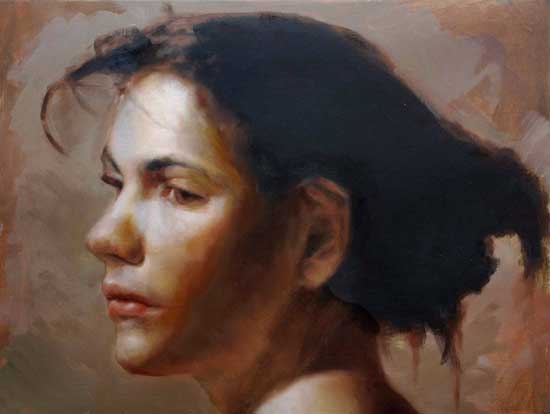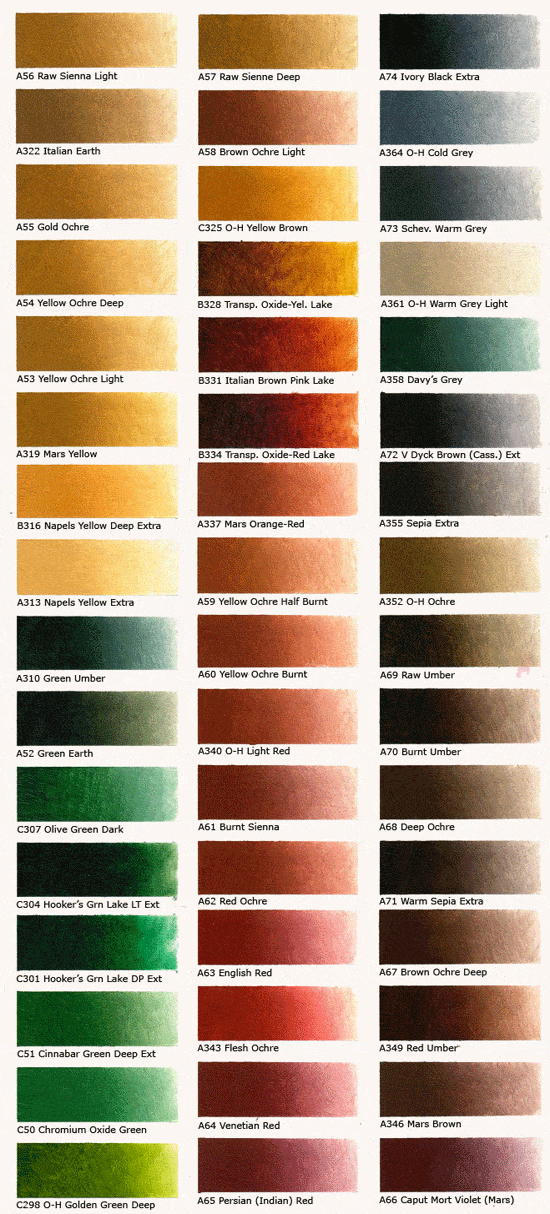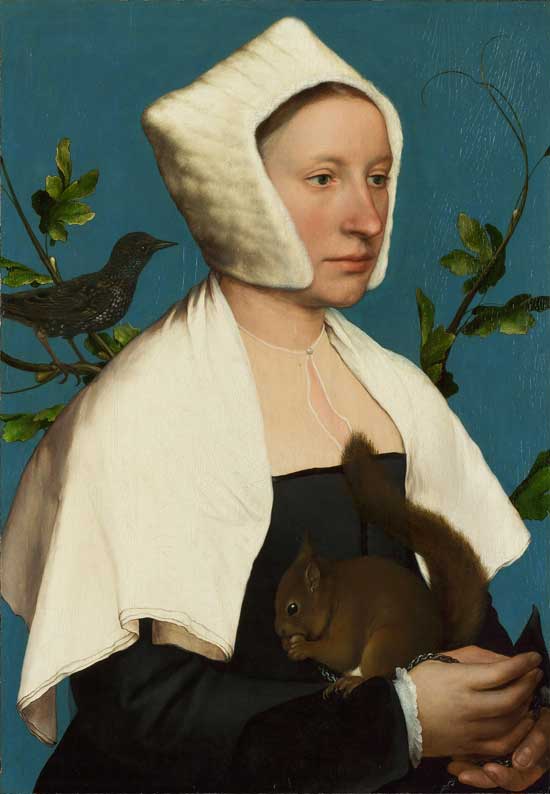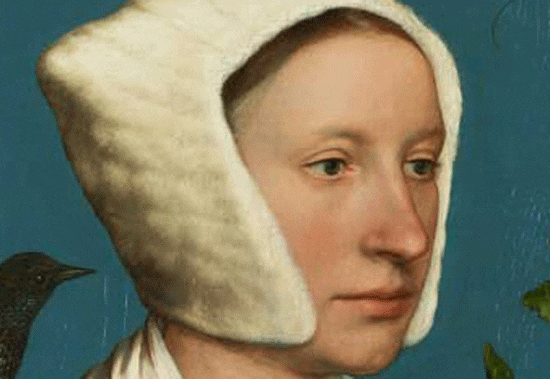Oil Paint Skin Tone Mix

Head Study – After Collins, Oil on Linen, Will Kemp
"Every time I paint a portrait I lose a friend"
John Singer Sargent
How not to paint a portrait, a personal tale
Let me take you back several years to the beginning of my experiments with portraiture.
It was a bright sunny morning after a long arduous night painting and I was feeling pretty pleased with myself, I had finally cracked my self-portrait…. enter my wife Vanessa
Vanessa: "Why do you look like Tom Jones?"
Me: "I don't look like Tom Jones"
Vanessa: "You do, what have you done? The portrait was looking great last night!"
Me: "I don't look like Tom Jones"
Vanessa: "You do! Look how orange it is, you look like the freakin' Tango man"
Me: "Shit….. I look like Tom Jones"
Skin tone, it isn't easy….
This was a self-portrait for a competition, the deadline was that afternoon and I had been working late into the night convinced that the painting looked too dull, too muted. What would give it the glow I was after? Sleep deprivation, a looming deadline and caffeine guided my decision… a warm orange glaze, now affectionately known the 'Tom Jones look'.
There is nothing more tricky than portraits.
A basic limited portrait palette
Titanium white, Yellow Ochre, Light red, English red, Raw umber, Ivory black
(I usually use Winsor & Newton Artists' oil, the Light red and English red are made by Old Holland)
With this palette, you can mix a base tone with the yellow ochre, white and light red. The black and the raw umber are used to cool down the 'pink' in your mixtures. Raw umber has a cool, greenish tint so is very handy for subtle toning.
Raw umber – often used mixed with white as a toned ground for portraits. It has a lovely coolness to it which will prevent you going overboard with the pink. As you lay colours onto the coloured ground they will look pinker than if you placed them directly onto a white canvas due to the effects of simultaneous contrast with colour. The raw umber acts as a muted green complement to the red.
An Extended portrait palette
- Titanium white
- Yellow ochre pale
- Yellow ochre
- Persian red
- Cadmium red
- Red umber
- Green Umber
- Burnt Umber
- Raw Umber
- Ivory black
The above palette is from the Angel Art Academy in Florence, each school often have their own palette. (All the paints are Winsor & Newton Artists' oil, the Persian red and red umber are made by Old Holland)
Thomas Couture said,
"You will see that the art of drawing surpasses everything else and that the qualities of color and light are only secondary to it."
He also said, all you need for figure painting is Naples yellow, vermillion, flake white and black.
So don't get overwhelmed by a whole range, if you have a white, muted yellow, muted red, and a cool colour to tone then down green or black (black mixed with white gives a cool blue hue) you will be fine.
Paint tube names
Not all colours are created equal, and not all colour ranges will stock the exact colours above. Often Student quality paints have less of a range than the artist quality equivalent.
However, a few alternatives are:
- Venetian red
- Terre Verte
- Indian Red
Below are some colour charts from some of the major paint manufacturers.
You can intermix brands, but each one will have slightly different properties. Micheal Harding paints have brilliant saturation, Winsor & Newton are widely available, it really does come down to personal preference. I always prefer artist quality because of the saturation of pigment.
These are not a full range of colours, I have just isolated the colours most relevant for portrait painting.

Old Holland -Artist Oil colours
Winsor & Newton – Artist oil colours
Winsor & Newton – Student quality Griffin quick drying oils
Daler Rowney – Student Quality Georgia oils
Micheal Harding – Artists' Quality oil paints
Matching a skin tone
Trying to match a skin tone can play havoc with our minds. We have a deep rooted childhood knowledge that skin tone is 'pink' and when first trying to mix colours that match skin can be hard to try and disassociate yourself from your prior logical perceptions of what colour should be, rather than how it actually is.
When mixing a colour, say for a cheek, we have a running commentary to ourselves that goes something like this "that doesn't look like a cheek colour, it's too dull, cheeks are rosy, I need a bit more red, that's better"
In fact, what you end up with is a painting that looks artificial.
The remedy?
Use muted colours.
Don't reach for the brighter colours no matter how strong the urge will be until your background, models clothes etc.. are all in place. Then you can begin to really see to if it needs to go brighter.
You'd be amazed at just how dull skin tone can be in portraits when they are isolated.

Hans Holbein the younger, A Lady with a Squirrel and a Starling – Anne Lovell? 1526-28


These colour swatches are taken directly from the painting above, the one on the left is from the reddest part of her right cheek and the one on the right is from the lips.
You can notice how the swatch on the right has the same colour undertone as the swatch on the left but it has a stronger red glaze over the top, probably Alizarin Crimson.
You won't get your skin tones right first time or second or third, this is normal, but every time you do a portrait another piece makes sense and you'll learn from your mistakes.
So don't be discouraged.
Mixing skin tones with bright colours
But what if you don't have muted, earth colours?
What if you have bright yellows and reds, can you still match a muted skin tone in your painting?
Of course, the below video shows a technique on how to practice matching skin and flesh tones in your painting using Acrylic paint.
Acrylics can be very handy when practicing skin tone swatches, in the video I paint the mixtures onto my own skin to judge the tone.
You can easily do this yourself and you may be surprised by the results. Look out for the end of the video when I mute the skin tones down with a black, it's amazing how effective this can be as a classic beginner mistake it to mix a colour that is too bright and too pink.
ARVE Error: Invalid URL https://www.youtube.com/embed/4XHT8ld4d2U in url
Just to give you an idea how difficult portraits are in classical painting schools you are only allowed to use black and white for 2 years before adding colours one at a time, it considered such a skill to master.
See: How to paint a portrait in Oil – Part 1 for how to build up a portrait painting in oils using classical painting techniques.
See: How to paint Naturalistic Skin Tones in Acrylic Course – Online course.
You might also like:
1. The trouble with Oil
2. The 3 tricks of complementary colour you can learn from Van Gogh
3. A simple way to understand brushes
Resources:
Winsor & newton basic oil palette guide
Hans Holbein at the National Gallery
Oil Paint Skin Tone Mix
Source: https://willkempartschool.com/how-to-choose-a-basic-portrait-painting-palette-for-oils/
Posted by: griffithdeally.blogspot.com

0 Response to "Oil Paint Skin Tone Mix"
Post a Comment